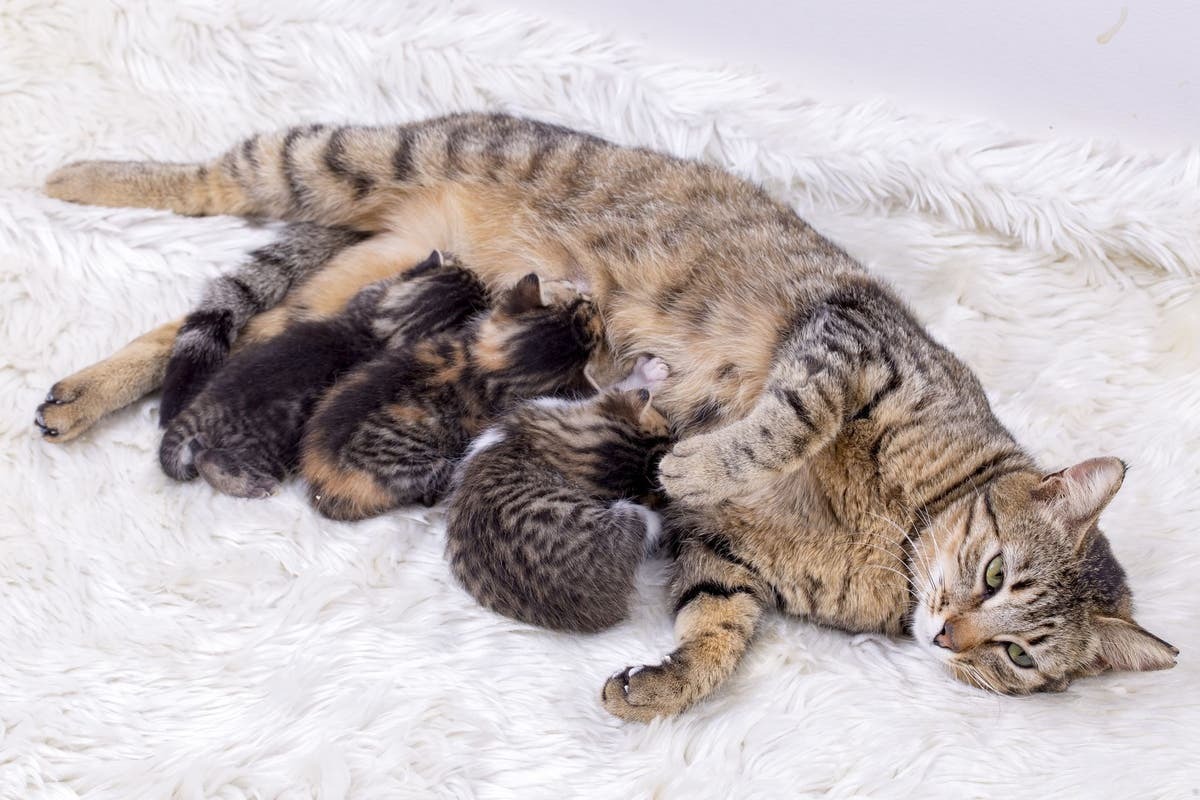
Cat breeding is a fascinating topic that involves the care, selection, and mating of cats to produce specific traits or breeds. For many cat lovers, learning about the intricacies of cat breeding can be a mind-blowing experience. From the variety of breeds to the unique genetic attributes, there are numerous interesting facts that highlight the complexity and beauty of this practice. Whether you’re a seasoned cat breeder or simply curious about the world of feline reproduction, this article will unveil 14 mind-blowing facts about cat breeding. Get ready to delve into the world of genetics, breeding programs, and the incredible diversity that exists within the cat kingdom. So, fasten your seatbelt and prepare to be amazed by the fascinating world of cat breeding!
Key Takeaways:
- Cats have been companions to humans for thousands of years, and there are over 70 recognized breeds with unique traits and characteristics, making them a diverse and fascinating part of our lives.
- Responsible breeding practices are crucial for the health and well-being of cats, and breed standards are established by cat breeding associations to ensure the desired traits and physical characteristics of each breed.
Cats have been domesticated for thousands of years.
Did you know that cats have been companions to humans for centuries? Archaeological evidence suggests that cats were domesticated around 4,000 years ago in ancient Egypt. They were highly valued for their ability to control pests like rodents.
There are over 70 recognized cat breeds around the world.
Cat breeding has led to the development of various breeds, each with its unique characteristics and traits. From the elegant Siamese to the playful Bengal, there is a breed to suit every cat lover’s preference.
The Maine Coon is the largest domestic cat breed.
Known for their impressive size, Maine Coons can weigh up to 25 pounds and have a length of over 3 feet. Despite their large stature, they are gentle and sociable cats.
Cats have a unique breeding behavior called “queening.”
Female cats, also known as queens, go through a reproductive cycle where they become more affectionate and receptive to mating. This behavior helps ensure successful breeding.
Male cats are called “toms” and can father kittens from multiple queens.
Male cats have the capability to father kittens with different queens during their mating season. This biological phenomenon allows for genetic diversity among offspring.
Persian cats are one of the oldest known cat breeds.
The Persian breed originated in Persia (present-day Iran) and is characterized by its long, luxurious coat and distinctive facial features. They have been admired for their beauty for centuries.
The Savannah cat is a crossbreed between a domestic cat and a wild African Serval.
Created in the 1980s, the Savannah cat combines the elegance of a domestic cat with the appearance of a wild cat. Known for their athletic ability and striking coat patterns, they are a popular choice among cat enthusiasts.
Some cat breeds are more prone to certain genetic health issues.
Due to selective breeding, certain cat breeds may be more susceptible to specific health conditions. For example, Persian cats are prone to respiratory problems and Himalayans to kidney disease. Responsible breeders focus on minimizing these risks through genetic testing.
Scottish Fold cats have unique folded ears.
Scottish Folds are known for their distinctive folded ears, which give them a charming and unique appearance. This genetic mutation that causes the fold can sometimes lead to ear and joint problems.
The Bengal cat has a coat that resembles that of a leopard.
Bengal cats have a stunning coat pattern that resembles that of a leopard, with colors ranging from brown to silver. This breed’s wild appearance is complemented by their playful and active nature.
Ragdoll cats are known for their docile and relaxed temperament.
Ragdoll cats are famous for their calm and gentle nature, often going limp when picked up, hence the name “Ragdoll.” They are highly affectionate and make wonderful companions.
Cat breeding associations establish breed standards.
Cat breeding associations, such as The International Cat Association (TICA) and the Cat Fanciers’ Association (CFA), set standards for each recognized breed. These standards define the desired traits and physical characteristics.
The Siamese cat breed has striking blue almond-shaped eyes.
Siamese cats are known for their mesmerizing blue eyes, which are almond-shaped. This breed is also known for its vocal nature and beautiful coat patterns.
Cat breeding requires responsible breeding practices.
Responsible breeders prioritize the health and well-being of their cats. They conduct genetic testing, provide proper care, and ensure that their kittens go to loving and suitable homes.
Conclusion
In conclusion, cat breeding is a fascinating aspect of feline biology and has numerous interesting facts associated with it. From the unique breeding behaviors to the wide variety of cat breeds available, there is so much to learn and discover about the world of cat breeding. Understanding these mind-blowing facts can give us a deeper appreciation for the intricacies of feline genetics and the efforts involved in producing specific traits and characteristics in cats.Whether you are a cat lover, a breeder, or simply curious about the subject, these facts about cat breeding shed light on the diverse and complex world of feline reproduction. From the selective breeding methods used to create new breeds to the incredible color and pattern variations found in different cat breeds, it’s clear that cat breeding is both an art and a science.So the next time you encounter a cat of a specific breed or see adorable kittens, remember the fascinating facts about cat breeding that contribute to their unique qualities and appearances. It’s truly awe-inspiring to see how humans have influenced the development of different breeds and how each kitty has its own unique heritage and genetics.Cat breeding is a captivating field that continues to evolve, and there is always something new to discover. Whether you are a cat enthusiast or simply intrigued by the wonders of nature, exploring the world of cat breeding will undoubtedly ignite your curiosity and deepen your understanding of these beloved feline companions.
FAQs
1. How long does it take for a cat to have kittens?
Cats have an average gestation period of around 63 to 65 days. However, it can vary slightly depending on the individual cat and breed.
2. Is cat breeding dangerous for the mother cat?
When carried out responsibly, cat breeding should not pose any significant risks to the mother cat. However, it is crucial to ensure proper care, nutrition, and regular veterinary check-ups to support the well-being of both the mother and her kittens.
3. Can cats breed with different breeds?
Yes, under certain circumstances, cats of different breeds can breed and produce mixed-breed kittens. However, it is important to note that specific breeding practices and guidelines should be followed to ensure the health and well-being of both the mother and the offspring.
4. How many kittens can a cat have in one litter?
The average litter size for cats is around 4 to 6 kittens. However, this can vary depending on various factors such as the age of the cat, breed, and individual variations.
5. Can cats breed with their siblings?
While it is possible for cats to breed with their siblings, it is generally not recommended due to the increased risk of genetic disorders. Responsible breeders avoid such close inbreeding to maintain the overall health and well-being of the cat population.
Feline enthusiasts craving more captivating cat content should explore our other mind-blowing articles. Discover rare cat breeds from around the world, each with unique characteristics and personalities. Siamese cats steal hearts with their adorable features and fascinating facts. Pixie Bob cats also have intriguing traits worth learning about. Whether you're a seasoned cat lover or just beginning to appreciate these enchanting creatures, our articles provide engaging insights into various breeds. Dive deeper into the world of cats and expand your knowledge with our carefully curated collection of feline-focused content.
Was this page helpful?
Our commitment to delivering trustworthy and engaging content is at the heart of what we do. Each fact on our site is contributed by real users like you, bringing a wealth of diverse insights and information. To ensure the highest standards of accuracy and reliability, our dedicated editors meticulously review each submission. This process guarantees that the facts we share are not only fascinating but also credible. Trust in our commitment to quality and authenticity as you explore and learn with us.


